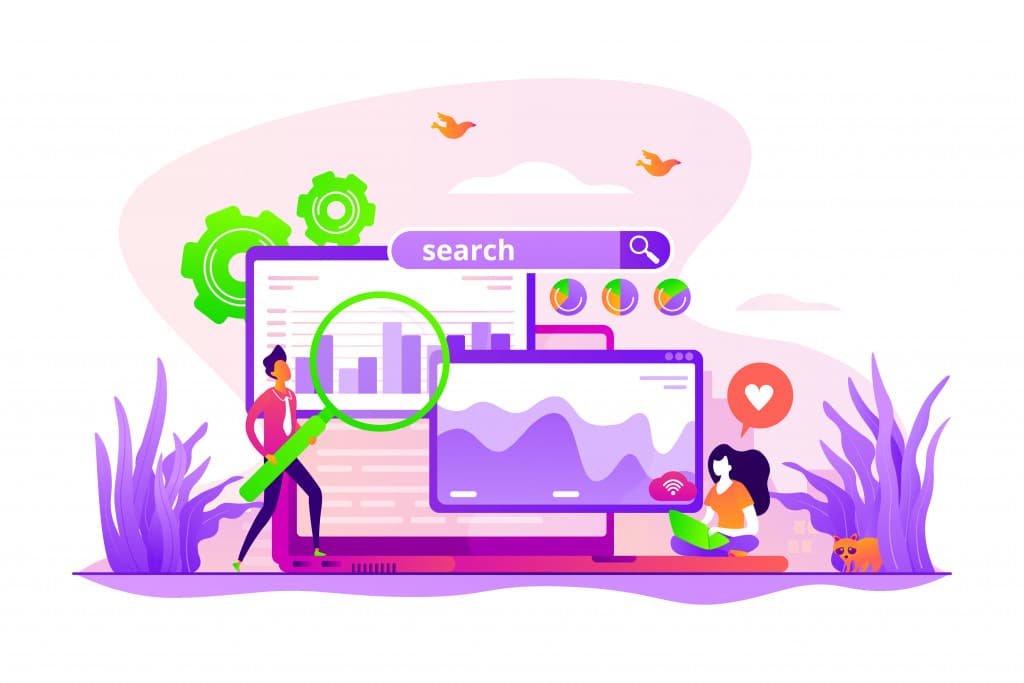
Wondering what online search engine has displaced Google?
It’s actually an “omnipresent” rather than an online-only search engine.
It beats Google to the punch and determines what results get acted on through buying decisions.
This is why the most important search engine is the one in your customer’s mind.
Tell me how your company ranks in that search engine, and I’ll tell you your growth, market share, and profitability:
- What “results” pop into mind when your customers need what you sell?
- Do customers think of you first?
- When they do think of you, is that thought accompanied by any mental “trust marks” or feelings of warmth?
- And what does their internal “user review” section have to say?
Because customers only go to Google for options and answers IF the recall results from their head come up short.
Otherwise, Google becomes nothing more than an access point to the website and phone number of the preferred provider the customer has already decided on.
See why the customers’ mental associations are a much more valuable thing to optimize than Google rankings?
Optimizing the Most Important Search Engine
The reason Google displaced Yahoo! and became synonymous with online searching is because they ranked results by hyperlinks rather than keywords.
How many other sites were pointing at your site, and what were they saying about you when they did?
Boom! This created exponentially better search results.
It also transformed the game of SEO into one of creating, engineering, and cultivating hyperlinks as a form of authority rather than mere keyword stuffing.
Suddenly these factors mattered most:
- How many other sites were pointing to your Website?
- How important and authoritative were those sites?
- And what did they say about your site?
Well, what is a hyperlink except a digital association?
Associative Memories: Your Brain’s “Hyperlinks”

Hyperlinks simply instruct browsers to connect (i.e., associate) this subject to that subject, this web page to that web page.
Associative memories work much the same for our minds.
Whether it’s a loved one’s perfume or cologne, a song from your high school days, or the sight of a hometown landmark, you doubtless have certain songs, scents, or even locations that trigger memories capable of transporting you across time and location.
You’ve associated this or that sensory detail with those memories.
And take note: the most powerful direction of association is from the sensory specifics to the emotional and relational.
You can move the other direction, but it’s not as strong a link.
Even weaker still are links between or pointing to concepts.
I can say, “Grandma’s House” and you can recall a certain scent or how you felt whenever you visited Grandma and what she meant to you.
But it’s not nearly as high voltage a connection as introducing the scent you associated with Grandma’s house (baking cookies, maybe?) in order to transport you back to those memories.
This asymmetry of connection is important, and we’ll get deeper into why in the next article.
For now, let’s extend that hyperlink/association analogy to SEO-ing the search engine in customers’ heads.
Association Design as Branding Done Right
 In this sense, SEO-ing the search engine in customer’s heads is nothing but association design, aka “Branding.”
In this sense, SEO-ing the search engine in customer’s heads is nothing but association design, aka “Branding.”
- How rich is the association network that “points to” or brings up your brand in the mind of the customer?
- How relevant are those associations? Do they get “clicked” or triggered when your customer needs what you sell?
- How emotional are those associations? Are the links weak or strong?
- And how social are they? How many of these cues and associations are shared with other important people in the lives of your customers?
These are the things that matter when it comes to dominating the search engine in the mind of the customer.
So how do you optimize for these things?
In a word, branding.
But not just any branding.
Branding that very specifically seeks to create and cultivate the mental connections between your brand and key emotions, needs, and situations.
So how exactly do you ensure your branding campaign will do all that?
Tune in next week and I’ll share the gory details.
- Are You Paying for Too Much for the Wrong Keywords? - July 15, 2024
- Dominate Your Market Like Rolex — 4 Powerful Branding Lessons - July 3, 2024
- Military-Grade Persuasion for Your Branding - June 25, 2024
